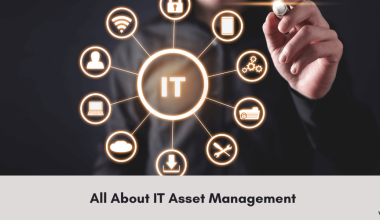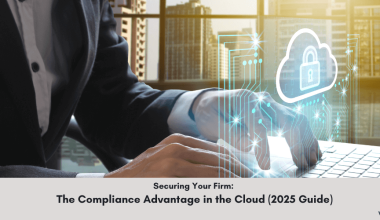When you hear the term ‘ransomware’, you might initially feel a mix of confusion and concern. You might think:
- Is this something I need to worry about?
- How does it affect me?
The idea of hackers locking up your critical files and demanding a ransom can seem like something out of a sci-fi movie, but it’s very real and dangerous. It might feel like another stressor in your already packed schedule of managing operations and finances. The thought of losing access to important data and dealing with a ransom demand can be quite worrisome, especially when you’re juggling a million other tasks.
Indeed, ransomware has emerged as one of the most formidable threats to businesses of all sizes. This malicious software, designed to encrypt a victim’s files and demand a ransom for release, can pose significant risks to operational continuity and financial stability. The rapid evolution of ransomware tactics and its growing sophistication, underscores the urgent need for businesses to understand this threat and implement much-needed protection measures.
This guide aims to provide a thorough understanding of ransomware, from its fundamental mechanics and attack vectors to practical protection measures.
What is Ransomware?
Ransomware refers to the malicious software designed to block access to a computer system or data until a ransom is paid. It’s a form of cyber extortion where attackers encrypt files or lock entire systems, rendering them inaccessible to the victim. Here’s how it typically works:
- Ransomware usually infiltrates a business system through phishing emails, malicious links, or software vulnerabilities. Once the malware is executed, it begins its attack on the system.
- After gaining access, the ransomware encrypts the victim’s files using complex algorithms. This means the files become unreadable without the decryption key held by the attackers.
- The attackers then demand a ransom payment to provide the decryption key. The ransom note often includes instructions on how to pay and a deadline for payment.
- If the ransom is paid, the attackers may provide you with the decryption key to unlock the files. However, there is no guarantee of recovery, and many victims find that paying does not always result in getting their data back. In some cases, victims may be left with no choice but to restore from backups or permanently lose their data.
Ransomware attacks can vary in complexity and scale, targeting individuals, businesses, and large institutions. The impact of such an attack can be severe, affecting everything from day-to-day operations to long-term financial stability.
Common Reasons Behind The Rise of Ransomware Attacks
Here are some of the main drivers behind the surge in ransomware attacks:
- As businesses and individuals rely more on digital systems and cloud storage, the volume of valuable data available for attack has grown. This increased dependence creates more opportunities for ransomware to find and exploit vulnerabilities.
- Ransomware attacks have evolved from simple infections to highly sophisticated operations. Attackers now use phishing, social engineering, and zero-day exploits to gain access to systems and deploy ransomware more effectively.
- The anonymity provided by cryptocurrencies has made it easier for attackers to receive and launder ransom payments without being traced. This financial secrecy incentivizes cybercriminals to pursue these attacks.
- Many organizations neglect basic cybersecurity practices, such as regular software updates, employee training, and robust backup systems. This negligence can leave gaps that ransomware can exploit, making attacks more widespread.
- Attackers often target sectors with high-value data or those critical to infrastructure, such as healthcare, finance, and government. These sectors will likely to pay ransoms quickly to avoid operational disruptions and data loss.
- The rise of Ransomware-as-a-Service (RaaS) platforms has lowered the barrier to entry for cybercriminals. These platforms provide ready-made tools and support, allowing even less technically skilled individuals to launch attacks.
Recommended Read: What is Software As A Service (SaaS)?
How to Protect Your Business Systems Against Ransomware?
You can safeguard your systems and data from ransomware attacks in the following ways:
- Implement Robust Backup Solutions
You can back up critical data and systems to a secure, offline location regularly. In the event of a ransomware attack, up-to-date backups allow you to restore your data without paying the ransom.
- Keep Software Up-to-Date
Update all operating systems, applications, and security software to patch vulnerabilities that ransomware might exploit.
- Educate and Train Employees
Conduct cybersecurity training sessions regularly for your employees to recognize phishing attempts, suspicious links, and other common attack vectors. Emphasize following security protocols and reporting any unusual activities.
- Implement Network Segmentation
Split your network into segments to limit the spread of ransomware if an infection occurs. This way, you can prevent an attack from affecting your entire network.
- Enable Multi-Factor Authentication (MFA)
Require MFA to access sensitive systems and data. This adds another layer of security beyond just passwords, making it harder for attackers to gain unauthorized access.
- Regularly Monitor and Respond to Threats
Implement a system for continuous monitoring of your network for unusual activity. A response plan allows you to act quickly if a ransomware attack is detected.
- Consider Hiring Managed Security Service Providers (MSSPs)
MSSPs can offer specialized expertise and resources to enhance your cybersecurity defenses. They provide round-the-clock monitoring, threat detection, and incident response services that can complement your internal security efforts.
How to Respond to a Ransomware Attack If It Happens?
Even with the best preventive measures, a ransomware attack may occur. How you respond to it can impact the extent of the damage and the recovery process. Here are a few ways to respond to such attacks:
- Immediately disconnect infected systems from the organization’s network to prevent the ransomware from spreading to other devices.
- Determine the scope of the attack by identifying which systems and files have been affected. Evaluate whether the ransomware encrypts files, displays ransom notes, or impacts system operations.
- Activate your internal incident response team and any external security partners you have. Communicate the details of the attack and follow the pre-established incident response plan.
- Document the attack thoroughly by noting ransom demands and preserving suspicious files or emails.
- While paying the amount asked may seem like a quick solution, it does not guarantee that you will regain access to your files.
- If you have recent, unaffected backups, begin the process of restoring your systems and data. Ensure that the backups are clean and free of ransomware before proceeding with restoration.
- Report the ransomware attack to relevant law enforcement agencies and regulatory bodies. They can offer support, investigate the crime, and provide guidance on handling the situation.
- Once the immediate threat is contained, conduct a thorough analysis of how the attack might have occurred and identify any weaknesses in your defenses. Use this information to strengthen your security posture and update your incident response plan.













